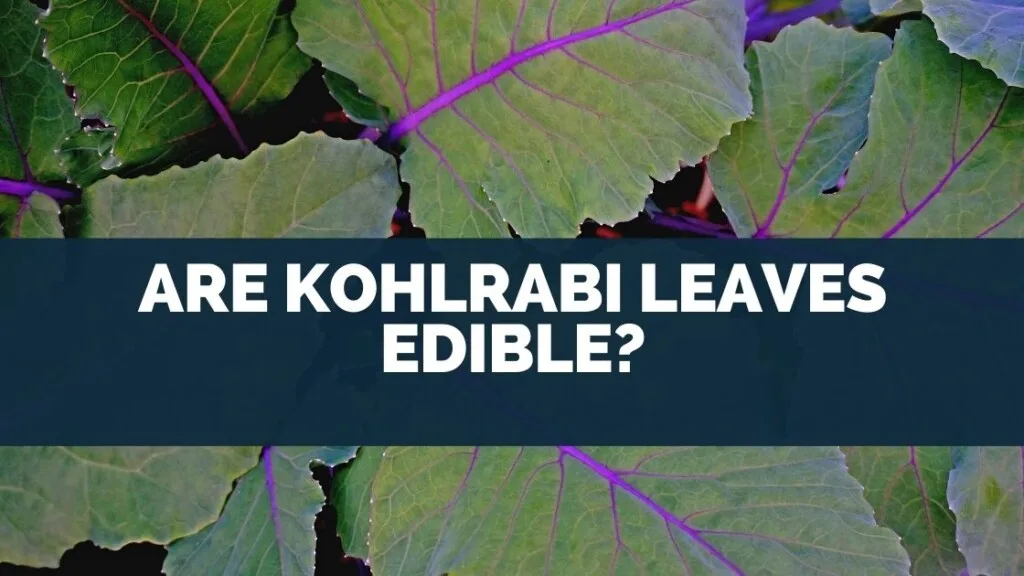
If you’re like most people, you probably think of kohlrabi as a vegetable with a bulbous stem and green leaves.
But did you know that the leaves are also edible? Kohlrabi leaves have a slightly bitter taste but are otherwise quite nutritious.
In this blog post, we’ll discuss the benefits of kohlrabi leaves and show you how to prepare them.
So if you’re looking for a new way to enjoy your veggies, be sure to give kohlrabi leaves a try!
Table of Contents
Are Kohlrabi Leaves Edible?
Kohlrabi is a healthy, crunchy addition to any meal. The leaves are also edible and can be eaten raw in salads or cooked as kale does under normal conditions with some preparation techniques that will help preserve their color while still making them tasty!
Kohlrabi is one of those vegetables that seem daunting at first glance, with its green Sputnik-like appearance and crunchy broccoli stem taste.
But if you take the time to get familiarized yourself then this will not be an issue!
It’s also worth noting how Kohlrabi can come in different colors such as purple or yellow – whatever suits your personal tastes best perhaps?
Kohlrabi leaves have a similar taste to kale or collards but are less intense. The ones that are harvested in the early spring will also be more flavorful and tender so it’s best to eat these greens when they’re available for harvesting!
The name “kohl” translates from the German language meaning cabbage while rabi means turnip but don’t let either of these words put off eating them because they’re both delicious when cooked correctly.
Kohlrabi is a bulbous root vegetable used in the cuisines of Central Europe and Asia.
It grows above ground, like an onion or garlic but with softer green leaves on top.
A great way to try Kohlrabi for yourself without having too much fuss over its cooking methods would be by stuffing them inside something else!
How To Buy A Good Kohlrabi?
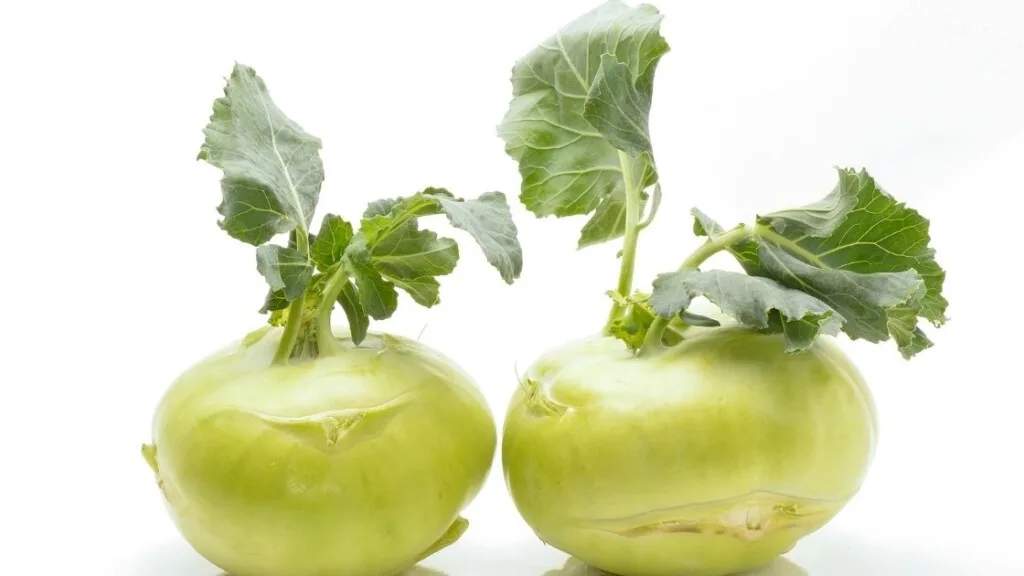
When it comes time to buy kohlrabi, we know that you’ll choose the freshest and tastiest specimens.
That’s why our favorite option is always organic from a farmers’ market—nothing beats locally grown produce! Beyond this preference though?
Take care when looking for bulbs with their leaves still attached; they’re an indicator of freshness because wilted veg won’t last long before drying out completely
The skin should feel very firm but not too thick at all – like holding onto one end (the bulb) while trying real hard.
How Can We Store Kohlrabi?
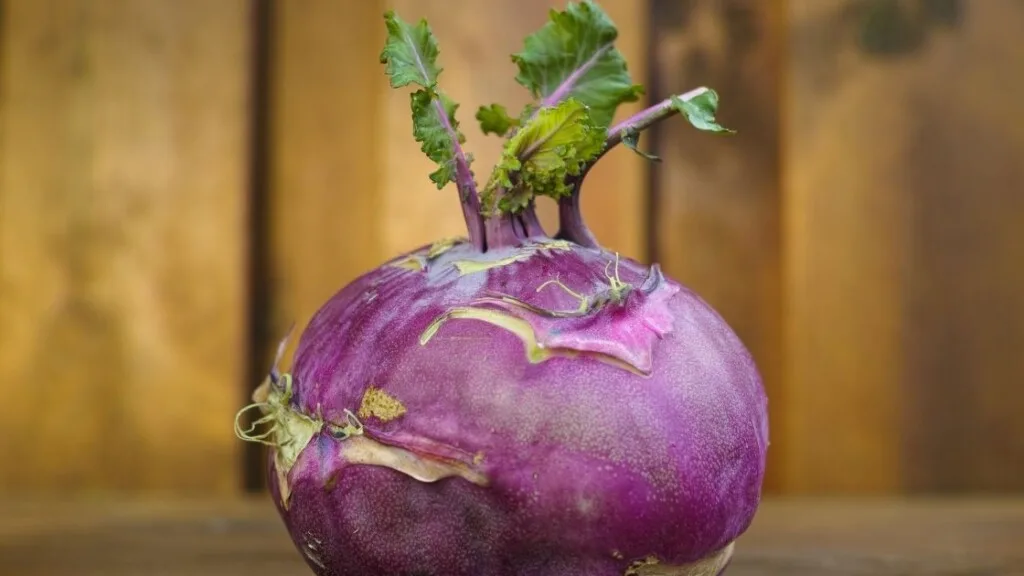
Kohlrabi is a cool-season vegetable that can be stored easily. Keep both the leaves and bulbs in his fridge, but you should only use them within a few days if they’re still freshly cut from your grocery store produce!
If not used right away though – unpeeled Kohlrabi will last for weeks without going bad–and maybe even longer until later into fall/winter when conditions are more ideal before preserving their excess harvest (or just haven’t eaten any yet).
Kohlrabi is a tasty, versatile vegetable that can be used in many recipes.
It’s best when the leaves are still attached and firm green so you may want to trim them off before storing if they’re not too pretty anymore or have started wilting after being picked from your garden!
Soak Kohlrabi sprouts overnight then cook with potatoes & carrots on Sunday morning for an easy side dish during football weekend game time.
The smaller bulbs will last longer than larger ones since there’s less flesh inside each one which makes it easier digestible.
How To Prepare Kohlrabi?
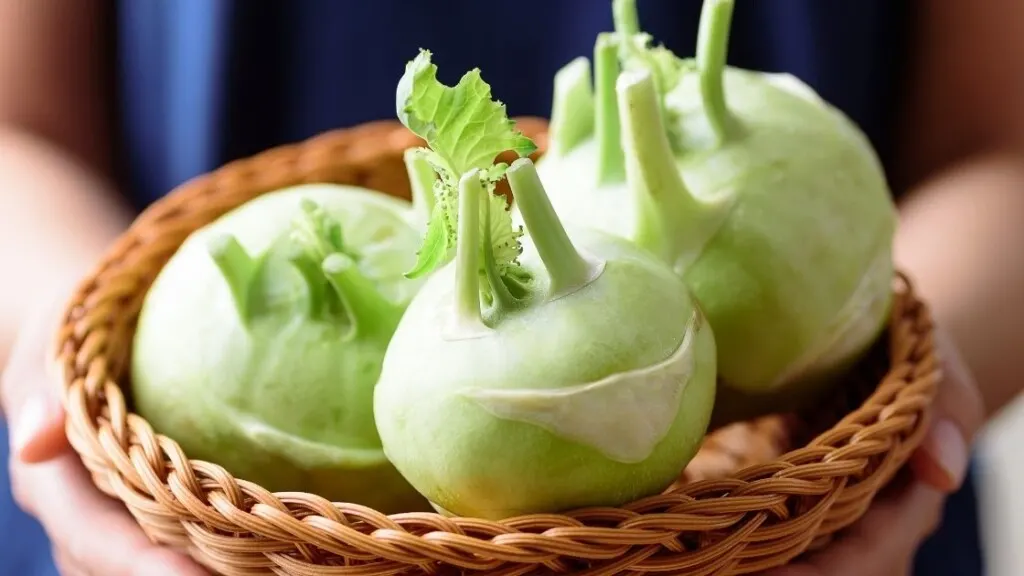
Kohlrabi is a delicious and versatile vegetable. Whether you peel it, dice or grate the kohlrabi before adding to your salads will all depend on how raw-veggie lovers delight in eating their vegetables!
One thing that’s consistent when preparing this tasty treat? Squeeze out excess water after boiling so they don’t become soggy later – unless someone wants those grated pieces right off of an endive platter.
A little salt goes quite far too; just make sure not too much.
Kohlrabi leaves are a nutritious addition to any dish. They can be enjoyed raw in the form of salads or cooked like greens, but they’re most flavorful when blanched and then sauteed with olive oil for about 5 minutes before adding salt & pepper according to taste preference!
Kohlrabi green is a unique vegetable that can be prepared in many different ways.
This dish, for example, features roasted garlic and thyme along with chopped potatoes before adding kohlrabi leaves to complete the recipe–roasting them all together until they become tender-crisp at low heat while seasoning often adds an extra layer of flavor from time to half-hour into the cooking process.
Kohlrabi soup is a perfect meal for those who want to eat healthily.
To make it, you will need kohlrabis (ordinary or gourmet), garlic cloves from 2 pinches of thyme, and some potatoes cooked in olive oil with marjoram leaves added towards the end when they’re ready.
Simmering all these ingredients together until roughly 20 minutes gives off an amazing flavor without any cream – but if preferred one can always add some before blending!
Benefits Of Kohlrabi?
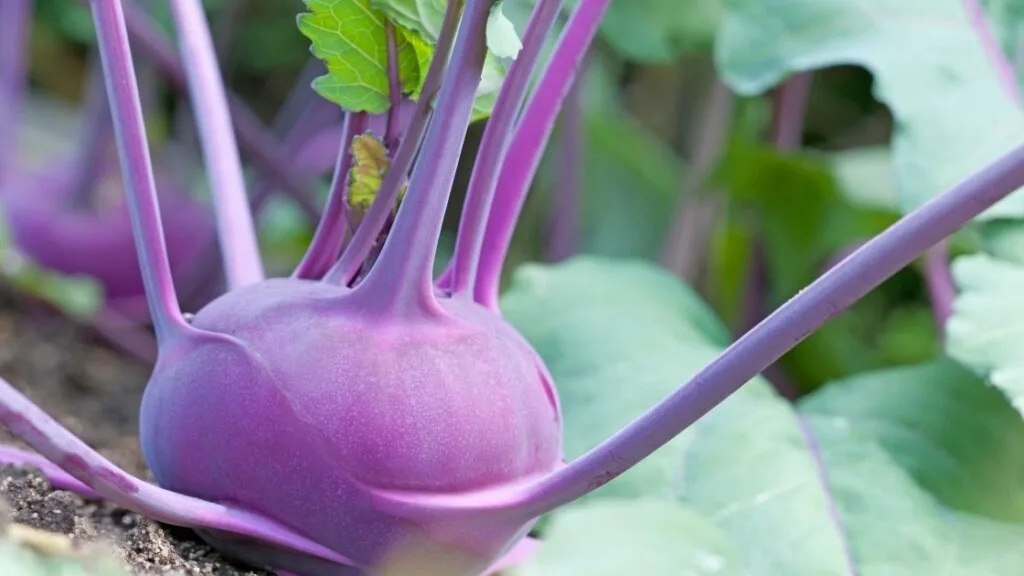
Kohlrabi green is not just a side dish. It may be one of the most important vegetables you eat! Kohlrabi contains anti-inflammatory properties, which help protect against cancerous cells growing in your body and slow down the aging process overall.
In addition to being rich with fiber – both soluble and insoluble types are present for this reason–it’s also loaded with vitamins A & C as well minerals including calcium, magnesium, iron, and potassium.
Kohlrabi is a vegetable that can help reduce your chances of developing serious health conditions such as cancer, diabetes, and heart disease.
Conclusion
Kohlrabi leaves are edible and have a different flavor than the kohlrabi bulb. They can be eaten raw or cooked, in salads or stir-fries. The hard outer layer of the leaf should be peeled before eating.

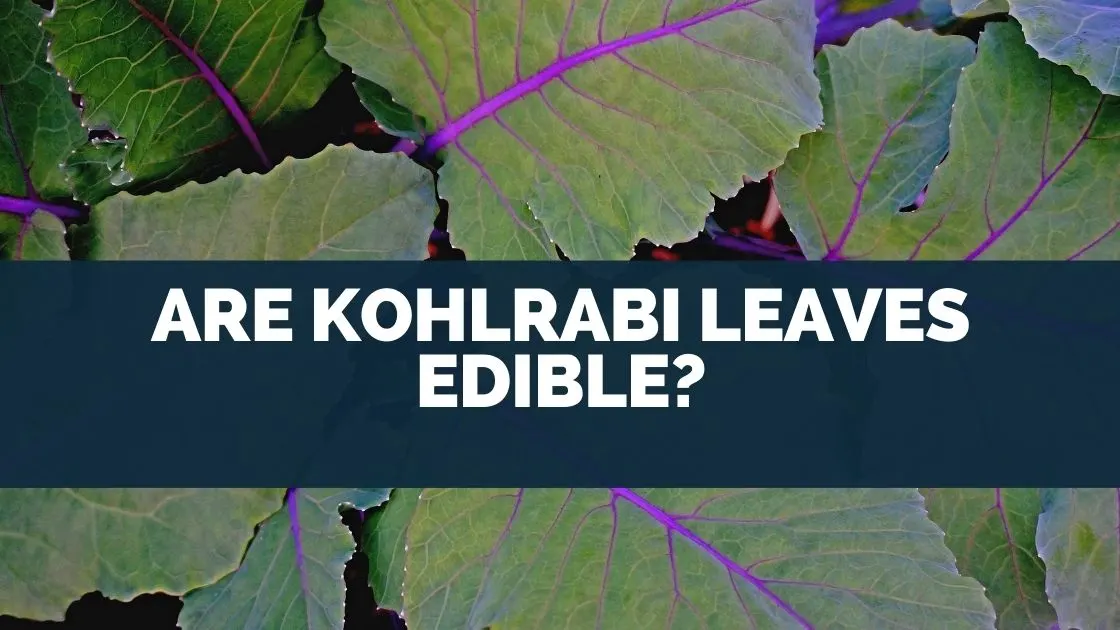
Leave a comment